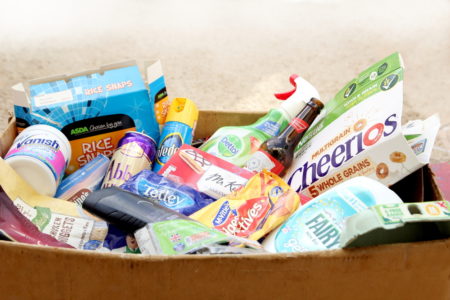
Data published this week has confirmed that packaging recycling targets for 2017 look largely on course to be met by the end of the year, with performance in steel, paper and wood ahead of schedule.
Obligation data which was made available on the Environment Agency’s National Packaging Waste Database (NPWD) on Monday (15 May) reveals the overall volume of packaging waste which packaging producers will need to meet under the by the end of the year.
Packaging obligation data for 2017 has been published
Packaging compliance experts have described the obligations as ‘in line with expectations’. The figures are based upon the volume of products that producers of packaging have placed onto the market in previous years – although the data is subject to change with some producers still to register their figures. Despite this, it is anticipated that late registrants will only have a minor impact on the final figures.
Expectations
Commenting on the data, Duncan Simpson, director of sales and marketing at producer compliance scheme Valpak, said: “The latest UK packaging obligation numbers are roughly in line with our expectations. We note that there are probably some producers still to register and submit data and therefore the obligation is likely to increase slightly from where it is reported today, but equally we usually find that late submissions of reprocessor and exporter data also increase later in the year to counteract this.
“Each material shows a level of growth to be achieved as was expected due to changes in annual targets and therefore any significant impact on the market is really down to external factors (such as China’s National Sword) which could impact price or any unexpected resubmissions of data which could make the numbers rise further. The new targets keep growth at a sensible level and continue to move the recycling performance in incremental steps towards the 2020 targets.”
When analysed against quarterly recycling figures from the first three months of the year – initially made available last month (see letsrecycle.com story) – the obligation data offers a clearer picture of overall progress towards the 2017 packaging recycling targets.
Commenting on the figures, Robbie Staniforth, commercial manager of compliance scheme Ecosurety, said: “In terms of the figures we have seen it is a bit lower than what we saw last year. Our assumption is always that there is maybe up to 1% that has not made the deadline [for the submission of data] so at the moment we are seeing it all as fairly achievable.”
The data suggests that around 40% of the overall wood packaging recycling obligation, which stands at 239,000 tonnes, has been met. The wood target has been static for a number of years at 22% but is set to rise to 48% by the end of the decade.
| Packaging Obligation 2016 | Packaging Obligation 2017 | Total Collected Q1 2017 | Progress Towards 2017 Target | |
|---|---|---|---|---|
| Paper | 2,674,689 | 2,797,794 | 960,800 | 34.3% |
| Glass | 1,577,735 | 1,601,920 | 391,808 | 24.4% |
| Aluminium | 79,613 | 86,288 | 21,256 | 24.6% |
| Steel | 364,589 | 363,933 | 112,637 | 30.9% |
| Plastic | 934,241 | 1,001,941 | 260,170 | 25.9% |
| Wood | 242,855 | 239,701 | 97,350 | 40.6% |
Paper
“The new targets keep growth at a sensible level and continue to move the recycling performance in incremental steps towards the 2020 targets.” – Duncan Simpson Valpak
Strong progress has also been made towards meeting the overall target for paper and board, with around 34.3% (960,800 tonnes) of the overall 2,797,794-tonne recycling obligation having been collected during the first quarter alone.
And, around one-third of the overall steel obligation of 363,933 tonnes has also already been met, the figures suggest.
Other materials look to be broadly on course to meet their 2017 targets, if recycling performance is in line with that seen in the first quarter, with glass, aluminium and plastic all close to 25% of the way towards their overall yearly targets, the data suggests.
The focus will fall on the levels of plastic recycling in particular, with reported difficulties in export markets coupled with a rising target expected to create challenging conditions for compliance schemes.

